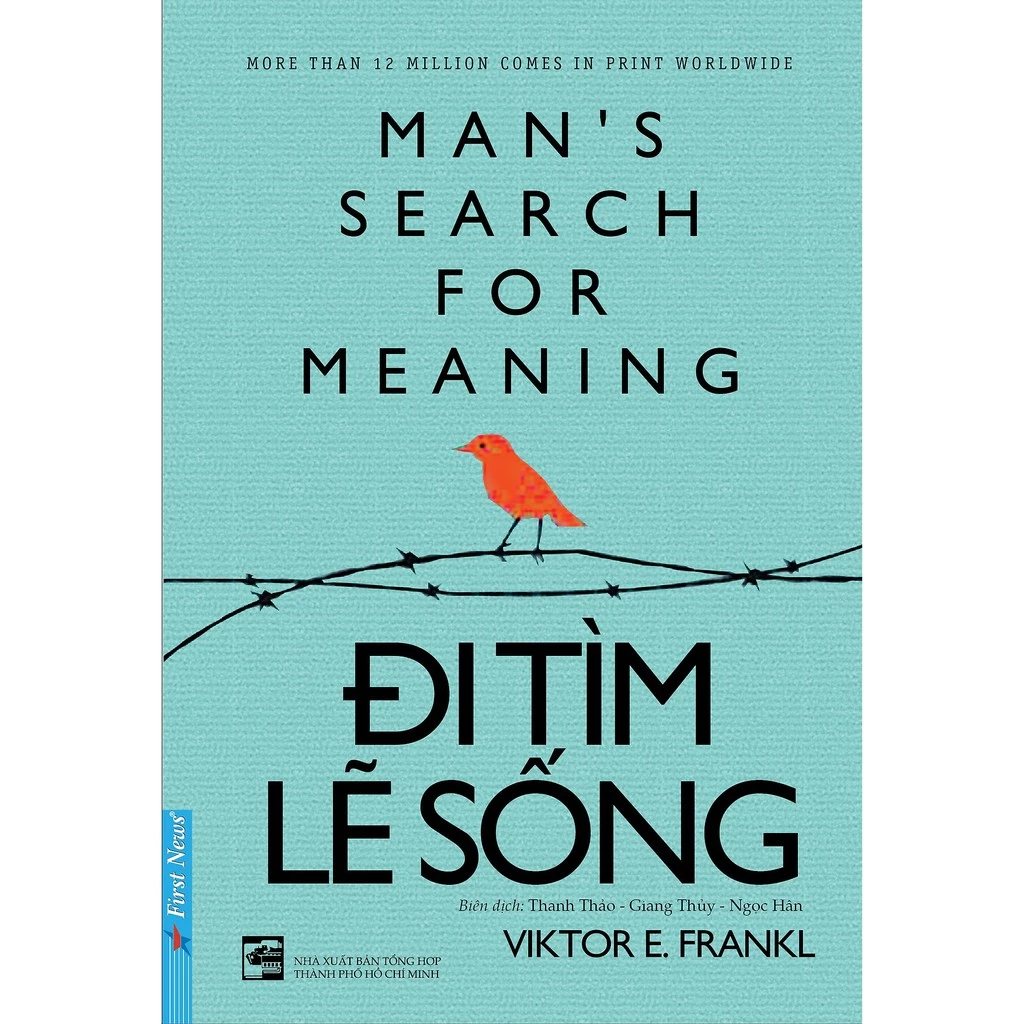Ion Antonescu
Ion Antonescu | |||||||||||||||||||||||||||||||||||||||||||||||||||||
|---|---|---|---|---|---|---|---|---|---|---|---|---|---|---|---|---|---|---|---|---|---|---|---|---|---|---|---|---|---|---|---|---|---|---|---|---|---|---|---|---|---|---|---|---|---|---|---|---|---|---|---|---|---|
 Chân dung chính thức, 1942 | |||||||||||||||||||||||||||||||||||||||||||||||||||||
Chức vụ | |||||||||||||||||||||||||||||||||||||||||||||||||||||
| Nhiệm kỳ | Ngày 6 tháng 9 năm 1940 – Ngày 23 tháng 8 năm 1944 | ||||||||||||||||||||||||||||||||||||||||||||||||||||
| Tiền nhiệm | Vị trí được thành lập | ||||||||||||||||||||||||||||||||||||||||||||||||||||
| Kế nhiệm | Vị trí bị bãi bỏ | ||||||||||||||||||||||||||||||||||||||||||||||||||||
Thủ tướng Romania | |||||||||||||||||||||||||||||||||||||||||||||||||||||
| Nhiệm kỳ | Ngày 5 tháng 9 năm 1940 – Ngày 23 tháng 8 năm 1944 | ||||||||||||||||||||||||||||||||||||||||||||||||||||
| Tiền nhiệm | Ion Gigurtu | ||||||||||||||||||||||||||||||||||||||||||||||||||||
| Kế nhiệm | Constantin Sănătescu | ||||||||||||||||||||||||||||||||||||||||||||||||||||
| |||||||||||||||||||||||||||||||||||||||||||||||||||||
| Nhiệm kỳ | Ngày 1 tháng 12 năm 1933 – Ngày 11 tháng 12 năm 1934 | ||||||||||||||||||||||||||||||||||||||||||||||||||||
| Tiền nhiệm | Constantin Lăzărescu | ||||||||||||||||||||||||||||||||||||||||||||||||||||
| Kế nhiệm | Nicolae Samsonovici | ||||||||||||||||||||||||||||||||||||||||||||||||||||
Thông tin cá nhân | |||||||||||||||||||||||||||||||||||||||||||||||||||||
| Sinh | 14 tháng 6 năm 1882[1] Pitești, Hạt Argeș, Vương quốc Romania | ||||||||||||||||||||||||||||||||||||||||||||||||||||
| Mất | 1 tháng 6 năm 1946 (63 tuổi) Jilava, Hạt Ilfov, Vương quốc Romania | ||||||||||||||||||||||||||||||||||||||||||||||||||||
| Nguyên nhân mất | Xử bắn | ||||||||||||||||||||||||||||||||||||||||||||||||||||
| Đảng chính trị | None[a] | ||||||||||||||||||||||||||||||||||||||||||||||||||||
Binh nghiệp | |||||||||||||||||||||||||||||||||||||||||||||||||||||
| Thuộc | Vương quốc Romania | ||||||||||||||||||||||||||||||||||||||||||||||||||||
| Phục vụ | Quân đội Romanian | ||||||||||||||||||||||||||||||||||||||||||||||||||||
| Năm tại ngũ | 1904–1944 | ||||||||||||||||||||||||||||||||||||||||||||||||||||
| Cấp bậc | Thống chế Romania | ||||||||||||||||||||||||||||||||||||||||||||||||||||
| Chỉ huy | Tổng tư lệnh của Lực lượng vũ trang Romania | ||||||||||||||||||||||||||||||||||||||||||||||||||||
| Tham chiến | |||||||||||||||||||||||||||||||||||||||||||||||||||||
| Tặng thưởng | |||||||||||||||||||||||||||||||||||||||||||||||||||||
Criminal conviction
| |||||||||||||||||||||||||||||||||||||||||||||||||||||
| a. ^ Formally allied with the Iron Guard (1940–41) | |||||||||||||||||||||||||||||||||||||||||||||||||||||
Ion Antonescu (/ˌæntəˈnɛskuː/; tiếng Romania: [i'on antoˈnesku] ⓘ; 14 tháng 6 [O.S. 2 tháng 6] 1882 – 1 tháng 6 năm 1946) là một sĩ quan quân đội và thống chế người Romania, ông đã chủ trì hai chế độ độc tài thời chiến với tư cách là Thủ tướng và Conducător trong hầu hết Thế chiến II. Là người chịu trách nhiệm trong việc tạo điều kiện cho cuộc diệt chủng Holocaust ở Romania, ông đã bị xét xử vì tội ác chiến tranh và bị hành quyết vào năm 1946.
Là một sĩ quan quân đội Romania đã nổi tiếng trong cuộc nổi loạn của nông dân năm 1907 và chiến dịch Romania trong Thế chiến thứ nhất, Antonescu là người theo chủ nghĩa bài Do Thái, vì thế đã đồng cảm với chính trị cực hữu và phe phát xít. Ông là tùy viên quân sự tại Pháp và sau đó là Tổng tham mưu trưởng, từng giữ chức Bộ trưởng Quốc phòng một thời gian ngắn trong nội các Cơ đốc giáo quốc gia của Octavian Goga cũng như Nội các Cristea đầu tiên, trong đó ông cũng giữ chức Bộ trưởng Không quân và Hải quân. Vào cuối những năm 1930, lập trường chính trị của ông đã khiến ông xung đột với Vua Carol II và dẫn đến việc ông bị giam giữ. Antonescu đã nổi lên trong chính trường qua cuộc khủng hoảng chính trị năm 1940 và thành lập Nhà nước Quân đoàn Dân tộc, một quan hệ đối tác không mấy dễ dàng với Horia Sima của Đội cận vệ Sắt. Sau khi đưa Romania vào liên minh với Đức Quốc xã, ông đã loại bỏ Đội cận vệ trong Cuộc nổi loạn Quân đoàn năm 1941. Ngoài việc là Thủ tướng, ông còn giữ chức Bộ trưởng Ngoại giao và Bộ trưởng Quốc phòng trong nội các của chính mình. Ngay sau khi Romania tham gia Phe Trục trong Chiến dịch Barbarossa, giành lại Bessarabia và Bukovina, Antonescu cũng trở thành Thống chế của Romania.
Là một nhân vật không điển hình trong số những kẻ thực hiện cuộc diệt chủng Holocaust, Antonescu đã thực thi các chính sách và là người phải chịu trách nhiệm cho cái chết của hơn 400.000 người, hầu hết là người Do Thái Bessarabia, Ukraine và Romania, cũng như người Romani Romania. Sự đồng lõa của chế độ trong cuộc diệt chủng Holocaust kết hợp các cuộc tàn sát và giết người hàng loạt như vụ Thảm sát Odessa năm 1941 với thanh trừng sắc tộc và trục xuất có hệ thống người dân đến Transnistria. Tuy nhiên, hệ thống hiện tại được đặc trưng bởi những mâu thuẫn riêng biệt, ưu tiên cướp bóc hơn là giết chóc, tỏ ra khoan hồng với hầu hết người Do Thái ở Vương quốc Cũ và cuối cùng từ chối áp dụng Giải pháp cuối cùng. Điều này trở nên khả thi vì Romania, với tư cách là đồng minh cấp dưới của Đức Quốc xã, không bị Wehrmacht chiếm đóng và duy trì được một mức độ tự chủ về chính trị.
Các cuộc tấn công trên không vào Romania của quân Đồng Minh vào năm 1944 và thương vong nặng nề ở Mặt trận phía Đông đã thúc đẩy Antonescu mở các cuộc đàm phán hòa bình với Đồng Minh, nhưng không có kết quả. Vào ngày 23 tháng 8 năm 1944, Vua Mihai I đã lãnh đạo một cuộc đảo chính chống lại Antonescu, người đã bị bắt; sau chiến tranh, ông bị kết tội về tội ác chiến tranh và bị hành quyết vào tháng 6 năm 1946. Sự tham gia của ông vào cuộc diệt chủng Holocaust đã được chính thức tái khẳng định và lên án sau báo cáo của Ủy ban Wiesel năm 2003.
Chú thích
[sửa | sửa mã nguồn]- ^ Lỗi chú thích: Thẻ
<ref>sai; không có nội dung trong thẻ ref có tênd37
Tài liệu tham khảo và đọc thêm
[sửa | sửa mã nguồn]- Final Report of the International Commission on the Holocaust in Romania, Polirom, Iași, 2004. ISBN 973-681-989-2
- Viorel Achim, The Roma in Romanian History, Central European University Press, Budapest, 2004. ISBN 963-9241-84-9
- Jean Ancel,
- Preludiu la asasinat. Pogromul de la Iași, 29 iunie 1941, Polirom, Iași, 2005. ISBN 973-681-799-7
- " 'The New Jewish Invasion' – The Return of the Survivors in Transnistria", in David Bankier (ed.), The Jews are Coming Back: The Return of the Jews to Their Countries of Origin after WWII, Berghahn Books, Providence, 2005, pp. 231–256. ISBN 1-57181-527-9
- Lucian Boia, Istorie și mit în conștiința românească, Humanitas, Bucharest, 1997. ISBN 973-50-0055-5
- Christopher R. Browning, The Origins of the Final Solution: The Evolution of Nazi Jewish Policy, September 1939 – March 1942, University of Nebraska Press, Lincoln, 2004. ISBN 978-0-8032-5979-9
- Maria Bucur,
- "Edifices of the Past: War Memorials and Heroes in Twentieth-century Romania", in Maria Todorova (ed.), Balkan Identities: Nation and Memory, C. Hurst & Co. Publishers, London, 2004, pp. 158–179. ISBN 1-85065-715-7
- "Women's Stories as Sites of Memory: Gender and Remembering Romania's World Wars", in Nancy M. Wingfield, Maria Bucur (eds.), Gender & War in Twentieth-century Eastern Europe, Indiana University Press, Bloomington, 2006, pp. 171–192
- Christopher Chant, The Encyclopedia of Codenames of World War II, Routledge & Kegan Paul Books Ltd., London, 1987. ISBN 0-7102-0718-2
- Adrian Cioroianu, Pe umerii lui Marx. O introducere în istoria comunismului românesc, Editura Curtea Veche, Bucharest, 2005. ISBN 973-669-175-6
- Marcel Cornis-Pope, John Neubauer (eds.), History of the Literary Cultures of East-Central Europe, John Benjamins, Amsterdam & Philadelphia, 2004. ISBN 90-272-3452-3; see:
- Letiția Guran, Alexandru Ștefan, "Romanian Literature under Stalinism", pp. 112–124
- John Neubauer et al., "1945", pp. 143–177
- Dennis Deletant, Hitler's Forgotten Ally: Ion Antonescu and His Regime, Romania, 1940–1944, Palgrave Macmillan, London, 2006. ISBN 1-4039-9341-6
- Dennis Deletant, "Romania" in The Oxford Companion to World War II edited by I. C. B. Dear and M. R. D. Foot (2001) pp 954–959.
- Stanislaw Frankowski, "Post-Communist Europe", in Peter Hodgkinson, Andrew Rutherford (eds.), Capital Punishment: Global Issues and Prospects, Waterside Press, Winchester, 1996, pp. 215–242. ISBN 1-872870-32-5
- Aleksander Gella, Development of Class Structure in Eastern Europe: Poland and Her Southern Neighbors, State University of New York Press, Albany, 1989. ISBN 0-88706-833-2
- Juliana Geran Pilon, The Bloody Flag. Post-Communist Nationalism in Eastern Europe. Spotlight on Romania (Studies in Social Philosophy & Policy No. 16), Transaction Publishers, New Brunswick & London, 1992. ISBN 1-56000-620-X
- Dinu C. Giurescu, Romania in the Second World War: 1939–1945 (East European Monographs, 2000).
- Roger Griffin, The Nature of Fascism, Routledge, London, 1993. ISBN 0-415-09661-8
- Arnold D. Harvey, Collision of Empires: Britain in Three World Wars, 1793–1945, Continuum International Publishing Group, London, 1992. ISBN 1-85285-078-7
- Rebecca Ann Haynes, " 'A New Greater Romania'? Romanian Claims to the Serbian Banat in 1941", in Central Europe, Vol. 3, No. 2, November 2005, pp. 99–120; republished by University College London's Library Services
- Radu Ioanid, "Romania", in David S. Wyman, Charles H. Rosenzveig (eds.), The World Reacts to the Holocaust, Johns Hopkins University Press, Baltimore & London, 1996, pp. 225–252. ISBN 0-8018-4969-1
- Michelle Kelso, "Gypsy Deportations from Romania to Transnistria, 1942–44", in Karola Fings, Donald Kenrick (eds.), In the Shadow of the Swastika: Volume 2: The Gypsies during the Second World War, University of Hertfordshire Press, Hatfield, 1999, pp. 95–130. ISBN 0-900458-85-2
- Padraic Kenney, The Burdens of Freedom: Eastern Europe since 1989, Zed Books, London, 2006. ISBN 1-84277-663-0
- Peter C. Kent, The Lonely Cold War of Pope Pius XII: The Roman Catholic Church and the Division of Europe, 1943–1950, McGill-Queen's University Press, Montreal & Kingston, 2002. ISBN 0-7735-2326-X
- Charles King, The Moldovans: Romania, Russia, and the Politics of Culture, Hoover Press, Stanford, 2000. ISBN 0-8179-9792-X
- Walter Laqueur, Fascism: Past, Present, Future, Oxford University Press, Oxford etc., 1997. ISBN 0-19-511793-X
- Philip Morgan, Fascism in Europe, 1919–1945, Routledge, London, 2003. ISBN 0-415-16943-7
- David Nicholls, Adolf Hitler: A Biographical Companion, ABC-CLIO, Santa Barbara, 2000. ISBN 0-87436-965-7
- William O. Oldson, A Providential Anti-Semitism. Nationalism and Polity in Nineteenth-Century Romania, American Philosophical Society, Philadelphia, 1991. ISBN 0-87169-193-0
- Z. Ornea, Anii treizeci. Extrema dreaptă românească, Editura Fundației Culturale Române, Bucharest, 1995. ISBN 973-9155-43-X
- Monty Noam Penkower, The Jews Were Expendable: Free World Diplomacy and the Holocaust, Wayne State University Press, Detroit, 1988. ISBN 0-8143-1952-1
- Antony Polonsky, Joanna B. Michlic, introduction to The Neighbors Respond: The Controversy over the Jedwabne Massacre in Poland, Princeton University Press, Princeton, 2004, pp. 1–43. ISBN 0-691-11306-8
- Sabrina P. Ramet, "The Way We Were—And Should Be Again? European Orthodox Churches and the 'Idyllic Past' ", in Timothy A. Byrnes, Peter J. Katzenstein (eds.), Religion in an Expanding Europe, Cambridge University Press, Cambridge, 2006. ISBN 0-521-85926-3
- Steven D. Roper, Romania: The Unfinished Revolution, Routledge, London, 2000. ISBN 90-5823-027-9
- Michael Shafir, "The Mind of Romania's Radical Right", in Sabrina P. Ramet (ed.), The Radical Right in Central and Eastern Europe since 1989, Penn State University Press, University Park, 1999, pp. 213–232. ISBN 0-271-01811-9
- Thomas, Martin. "To arm an ally: French arms sales to Romania, 1926–1940." Journal of Strategic Studies 19.2 (1996): 231–259.
- Ottmar Trașcă, "Ocuparea orașului Odessa de căre armata română și măsurile adoptate față de populația evreiască" Lưu trữ 15 tháng 9 năm 2018 tại Wayback Machine, in the Romanian Academy George Bariț Institute of History's Historica Yearbook 2008, pp. 377–425
- Francisco Veiga, Istoria Gărzii de Fier, 1919–1941: Mistica ultranaționalismului, Humanitas, Bucharest, 1993. ISBN 973-28-0392-4
- Watts, Larry L. Romanian Cassandra: Ion Antonescu and the Struggle for Reform, 1916–1941 (East European Monographs, 1993)
- Petru Weber, "Die Wahrnehmung des »Domestic Holocaust« im Rumänien der Nachkriegsjahre", in Regina Fritz, Carola Sachse, Edgar Wolfrum (eds.), Nationen und ihre Selbstbilder. Postdiktatorische Gesellschaften in Europa, Wallstein Verlag, Göttingen, 2008, pp. 150–167. ISBN 978-3-8353-0212-9
- Gerhard L. Weinberg, Germany, Hitler, and World War II: Essays in Modern German and World History, Cambridge University Press, Cambridge, 1996. ISBN 0-521-56626-6
Historiography and memory
[sửa | sửa mã nguồn]- Chioveanu, Mihai. "A Deadlock Of Memory The Myth And Cult Of Ion Antonescu In Post-Communist Romania." Studia Hebraica 3 (2003): 102–123.
- Treptow, Kurt W. Romania and World War II ( Center for Romanian Studies, 1996).
- White, George W. Nationalism and Territory. Constructing Group Identity in Southeastern Europe, Rowman & Littlefield, Lanham, 2000. ISBN 0-8476-9809-2
Liên kết ngoài
[sửa | sửa mã nguồn] GIẢM
20%
GIẢM
20%
 GIẢM
20%
GIẢM
20%
![[Tập hiểu sâu]: Vì sao Bạn luôn KHÔNG ỔN?](https://images.spiderum.com/sp-images/f5ab2630336211eea9e7ef608f381f46.png) GIẢM
12%
GIẢM
12%
 GIẢM
30%
GIẢM
30%
 GIẢM
50%
GIẢM
50%
 GIẢM
-26%
GIẢM
-26%



